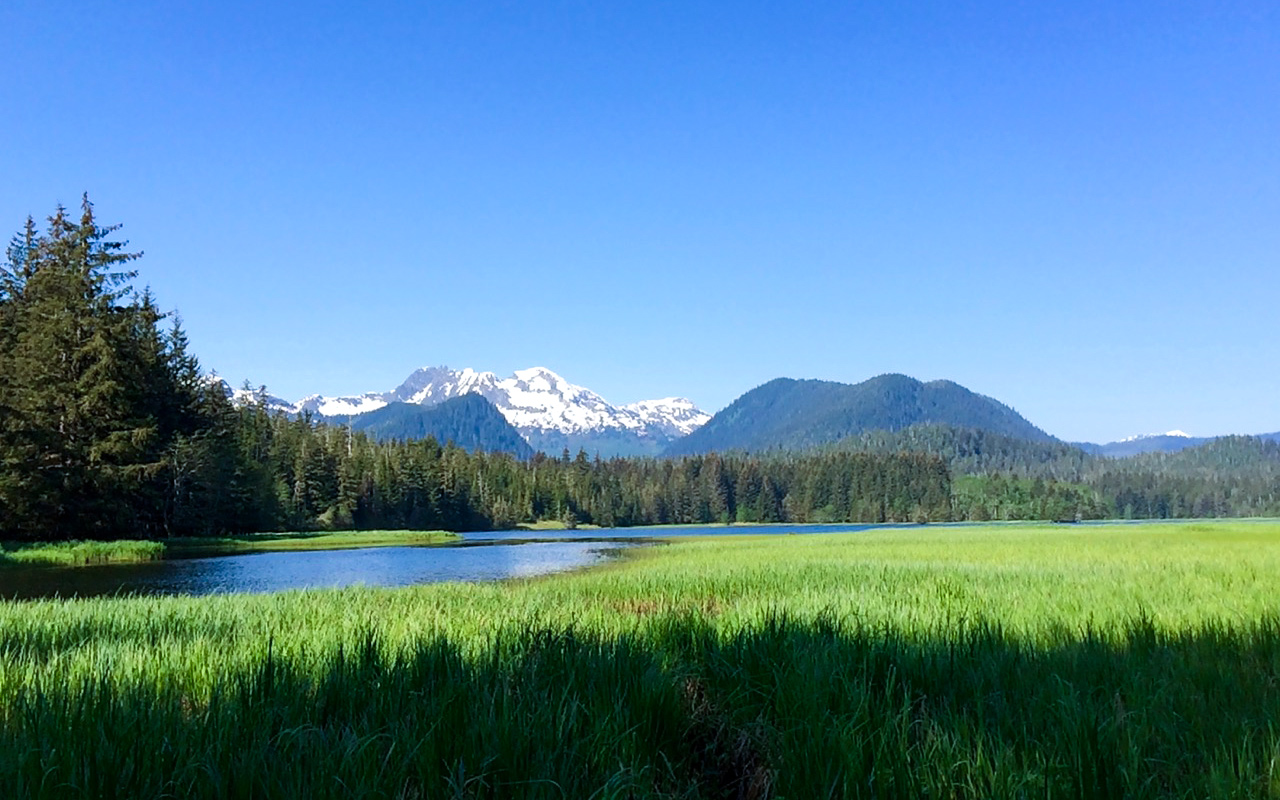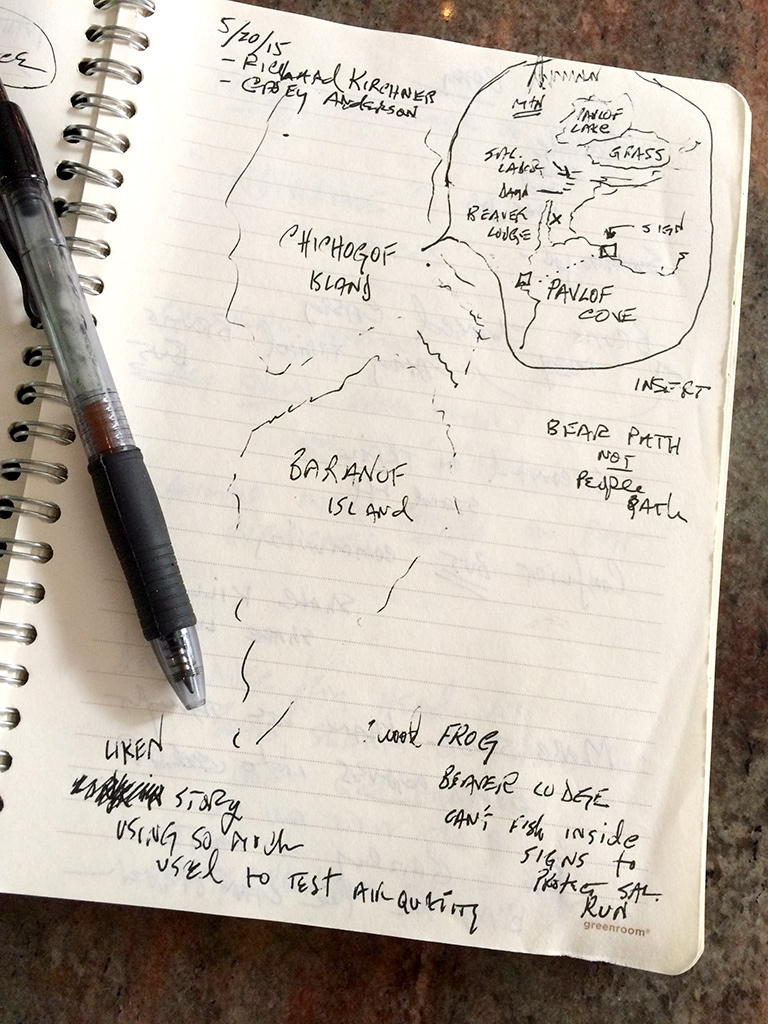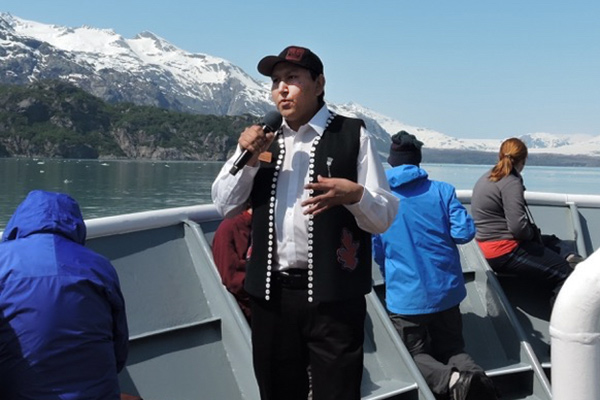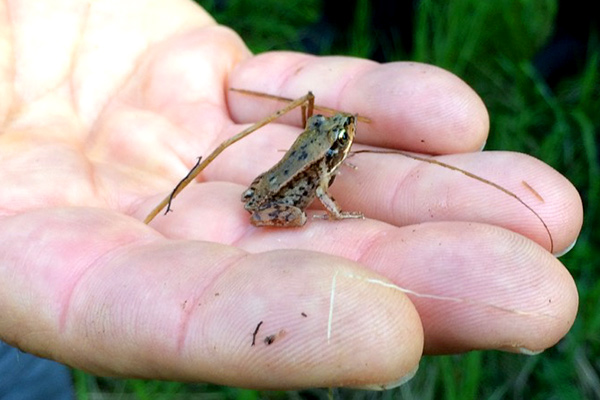
I want to live in a world where people are kind to each other – a world where our environment matters.

I made a promise to keep Namasté with me for the month of May, no matter where I went or who I met. What happened during my recent journey feels life-changing.
My wife and I traveled to Southeast Alaska for a week in late May, moving among the many islands on a small expedition ship. When we planned the trip, Namasté was not on my packing list. I had no idea that each day, as we went ashore by Zodiac inflatable boats to remote coves and inlets, I would have Namasté with me.
I found Namasté connecting me to my surroundings in ways I had not previously experienced or even thought about.

Leonty Williams, a local Tlingit tribesman who came aboard for the day in Glacier Bay, showed me that by allowing my spirit to honor the spirit in the animals, plants, rocks, sky, water and ice I could make this connection – a connection that is part of The Huna Tlingit experience.
The Tlingits people believe they are part of the cycle of creation, returning in different roles throughout the ages through reincarnation. They feel they are simply part of the total of God’s creation; not separate from but part of the universe.
This Tlingit belief is similar to the Jewish and Christian faith traditions’ second creation story (Gen 12:6) where humans are seen to be in the service of the earth, on which life and livelihood depend. The first creation story (Gen 1:26,28) uses the word dominion (nadah); originally translated as controlling but now felt to mean caring for, loving.

Just moments ago, after I had finished this post, I open David Brooks, The Road to Character. In the introduction, Brooks speaks of the same two creation stories: how Adam I is interested in conquering the world while Adam II wants to obey a calling to serve the world. Adam I’s motto is ‘success’ and Adam II is ‘charity, love and redemption.’ Bravo, David and Adam II.
For me, embracing Adam II by removing the veil between my self-importance and nature is a beginning.
As for my relationship with nature; I feel sure the Tlingit people use a different word, but Namasté works for me. I am more at peace, more relaxed and, as a bonus, I sleep better at night.
Is Adam II another expression of Namasté?
I want to extend and expand Namasté; build on these benefits. Will you join me?
If you missed my April 30 post, here is the message:
Namasté fits the world I am looking for.
For the month of May, I want to bring Namasté into my daily life.
I hope it finds a comfortable forever home and stays
with me longer than just one month.
Being kind to each other is a form of Namasté (nah-mas-tay), a Sanskrit word with many interpretations:
My soul honors your soul.
I honor the place in you where
the entire universe resides.
I honor the light, love, truth,
beauty and peace within you,
because it is also within me.
In sharing these things
we are united, we are the same,
we are one.…common definition of Namasté
Namasté, as a greeting, says, “may our minds meet.” I touch my palms and place them over my heart-center and bow in greeting, extending respect and love. It says that we share one life force.
I can’t hate, or be cruel to people after I exchange the Namasté greeting.
In some settings, my greeting will take different forms: a firm handshake, a hug, a kind word with eye contact or the formal Namasté greeting. With each, the words in my heart will be the same, “the good in me honors the good in you, may our minds meet – in love.”
I want to live in a world
where people are kind to each other…”
What do you think? Is it crazy to envision a world of love? A world of kindness?
Can Namasté connect us with the environment and with nature?
As always, the conversation starts here.

Yes!
Amy,
One “Yes!” at a time and we get there. Thanks.
– Bruce
a challenging but beautiful practice!!!
Barbara,
Thank you for commenting. Yes, challenging but one step at a time starts the journey.
I am glad you are following Choices Do Matter.
–Bruce
How awesome, a friend showed this to me just now. Glad I was able to impart some of our Lingit insight with you!
Leonty, thank you for introducing me to your culture. My trip was greatly enhanced by your excellent commentary. I will carry your words in my heart and mind forever.
Thank you for joining the conversation on Choices Do Matter. Please continue to follow along.
– Bruce
Bruce, some many years ago I was part of a Native American sweat lodge near Ashville. One of the things I will always remember is the leader asking us to stand in a circle holding hands. One palm up and one palm down. The Native American tradition is that when joining hands in this way everyone’s heart beat in unison. I think we would have a better world if we did more of this & focused on unity of heart & mind.
Richard, thank you for your comment. I agree. It is so simple. I often find myself humming the Burt Bacharach tune, performed so wonderfully by Dionne Warwick: What the World Needs Now is Love.
Maybe I will start singing out loud!
– Bruce